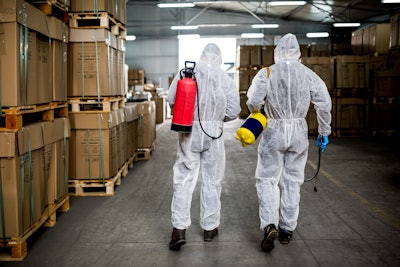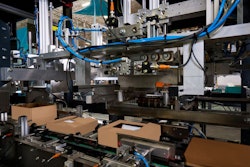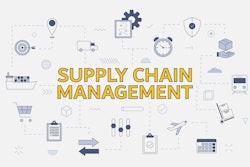
When the temperature starts dropping in the fall and winter, many people opt to spend more time indoors to escape the cold. Unfortunately, pests are no different. Supply chain professionals know that cooler temps might signal the start of “peak season,” but it also results in an increase in pest activity in warehouses and distribution centers. These facilities offer a variety of entry points, warm environments and plenty of hard-to-reach spaces to hide, making them particularly vulnerable when it comes to pests.
As you’re preparing your supply chain for the end-of-year rush, it’s critical to consider pest control an integral part of supply chain management. For those looking to enhance pest control efforts this season, learning about the common warehouse pests to keep an eye out for, understanding the risks those pests pose to facilities and employees and implementing preventive and mitigation strategies can help protect your business heading into the busiest months of the year.
Common Warehouse Pests
Depending on the industry, your supply chain facility may be susceptible to a variety of different pests. However, one thing is true for all warehouses: pests of all shapes and sizes can creep in when you’re not looking. Here are the most common warehouse pests to keep an eye out for:
- Insects, such as cockroaches and ants: When you think of pests that might affect a warehouse or manufacturing facility, insects likely come to mind. Proper identification is critical, as each species requires specific treatment methods. Whether you’re dealing with cockroaches, ants or beetles, they can be hard to avoid and even harder to get rid of.
- Rodents: Rats can grow up to nine inches long, but they can fit into spaces a fraction of their size. Mice are even smaller, so they can sneak into facilities through dime-sized holes, making exclusion methods the best way to avoid an infestation of either of these rodents.
- Birds: Birds can fly into a supply chain facility when you’re not looking, and specific species can threaten your facility based on where you are located. With humane bird remediation methods, you can help prevent these feathered creatures from impacting your operations.
- Flies: These flying insects do more than cause a nuisance in your facility. They like to congregate in trash areas or around spilled food and drink, and they multiply quickly, so time is of the essence when dealing with flies.
Potential Risks to Your Business
While pests are certainly an annoyance to employees, they can impact your business in more significant ways, such as:
- Profit loss: If your facility is impacted by a pest infestation, you may have to shut down operations to handle the issue. Supply chain downtime results in lost profits, so preventive measures can help avoid pests and maintain profitability.
- Health & safety implications: Pests – especially cockroaches, flies and rodents – spread germs that they pick up in sewers, trash areas, and drains. Bird droppings also carry disease, including histoplasmosis, Salmonella and avian influenza. This can lead to contamination of product, which may result in expensive recalls and disgruntled customers.
- Structural damage: Pavement ant populations can become large, and if they are nesting under a slab, they can cause shifts that lead to costly and hazardous cracks. As rats gnaw on their surroundings to wear down their ever-growing teeth, they can mistake electrical wires for plants, which increases the risk of fire, and the corrosive nature of bird droppings can damage buildings and walkways.
- Tarnished reputation: No matter how strong your business’s reputation is, all it takes is one pest infestation to result in lasting harm. Pests can contaminate products and equipment, slowing down operations and leading to unhappy customers. Even worse, if contaminated products get distributed, it can lead to reputational damage for years to come.
Prevention and Mitigation Strategies
Fortunately, pest management professionals can help prevent and address even the most serious pest infestations.
- Prevention is easier than recovery. The best way to deal with a pest infestation is to prevent one in the first place. Through methods such as sealing entry points to avoid insects and rodents from getting inside to thorough cleaning and sanitation procedures that discourage pest populations, you can make a strong effort to avoid a pest introduction from becoming a full-blown infestation.
- Turn to the experts. Pests are smart. At a certain point, you are more than likely going to experience a pest issue. In that case, don’t feel like you need to handle the problem on your own. Pest management professionals can help you prevent pests from getting inside through a method called “exclusion.” If pests have already infested your facility, experts can recommend the best course of action for your specific pest problem.
There are many things to look forward to heading into the cooler months of the year, but increased pest activity isn’t one of them. By understanding the common pests that could affect your warehouse or distribution center and the risks they cause, as well as ways to help prevent or handle an infestation, you’ll be prepared to maintain a clean, safe and efficient operation all season long.





















